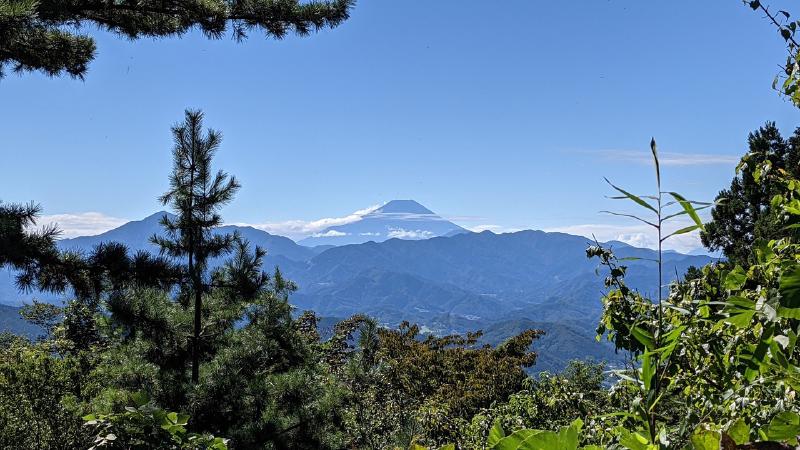When I lived in Munich, the Alps were near - but I never got into the habit of hiking. Munich had plenty of green spots already in the city, I had a woods directly behind the house, great for jogging.
Tokyo is very different. Full trains, skyscrapers and lots of concrete push people into hobbies like camping, or hiking.
Tokyo has a great public transport, it’s easy to get
to nearby destinations.
Sometimes I just go 70min by train, and can then directly
start walking. For the farther locations I need 2.5 hours of train,
plus 30-40min by bus.
The Mount Jinbasan/Takaosan trip
Let’s look at a trip to my favourite location: at one year I went there more than 20 times. On a Saturday I’m leaving the flat at 6:50 by bike. After 10min I reach train station Chitose-Karasuyama. Storing the bike in a parking house, in the evening I pay 150yen for the day. At a nearby convenience store I fetch 3 Onigiri (rice balls) and some sweets. At 7:22 I enter the train, often there are other hikers, pupils going to lessons. You also see cyclists, with the bike stowed away into a big bag.
After one change of trains I arrive at Fujino-station, it’s 8:33. I’m starting to walk, heading north. When visiting new hiking trails, I usually use the OSMand app on Android. OSMand using OpenStreetmap data, is more detailed than google maps, and can be used offline. After 25min I arrive at the foot of the mountain (“陣馬登山口”), a bus could also be used until that place. From there, 2 ways are running up to Mount Jinba. Farmers are putting out products: mandarine, tomato, sour plum, kiwi fruit, green tea. The price is written on small price tags, most portions cost 100yen. For payment, you insert the money in a small box. After 20min, on a day with clear view, we can see Mnt. Fuji nicely for the first time. We enter a forest.

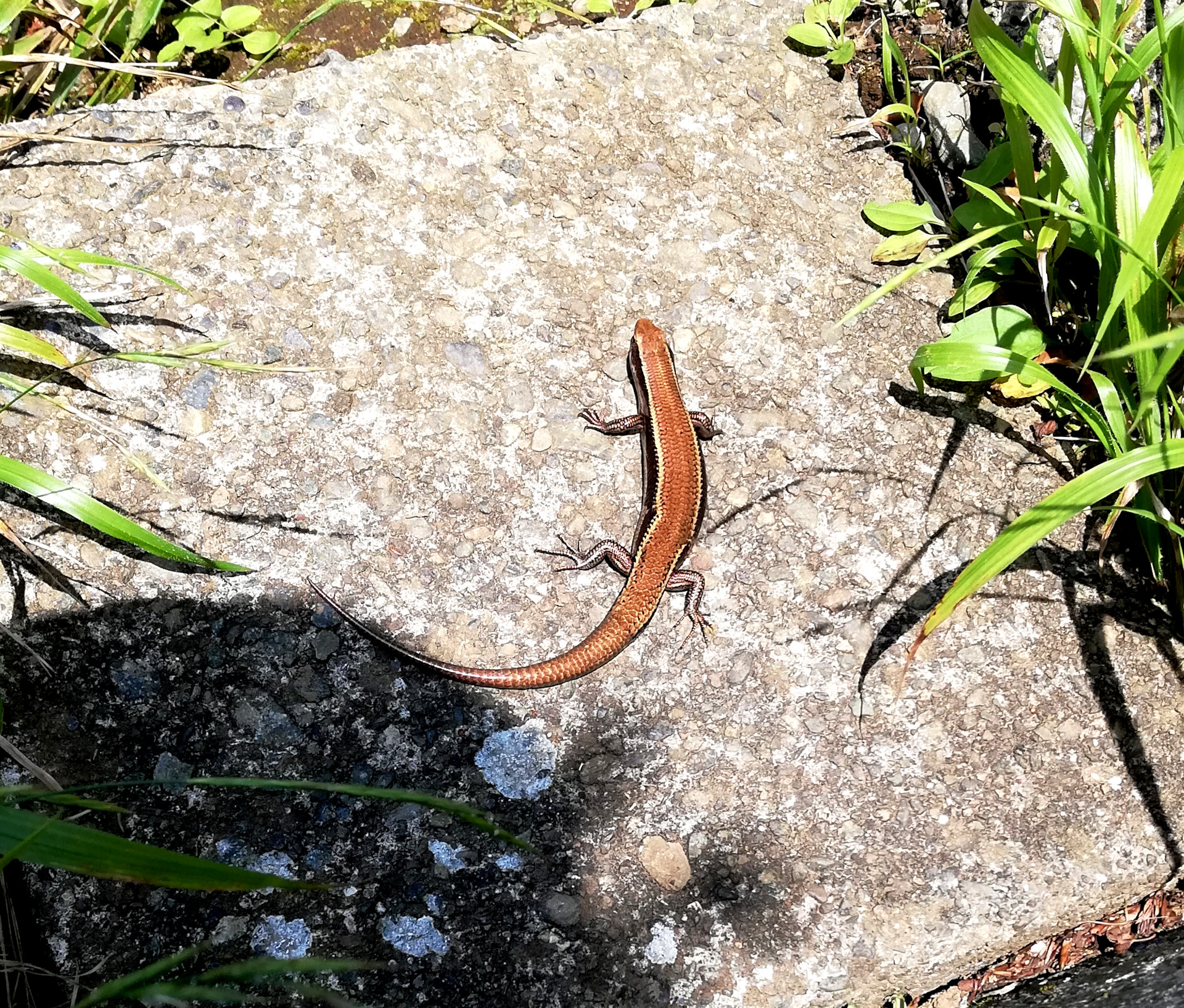

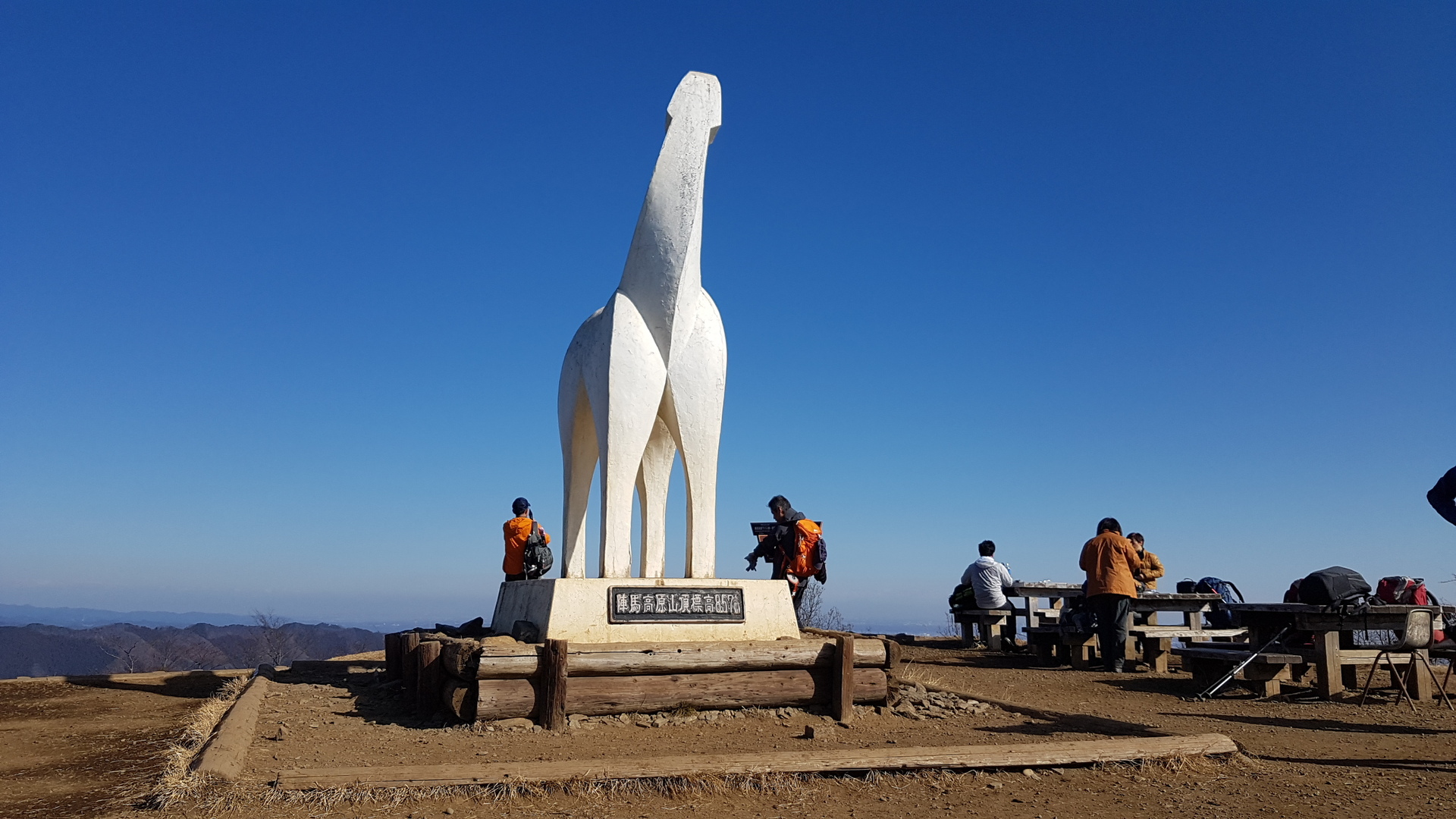



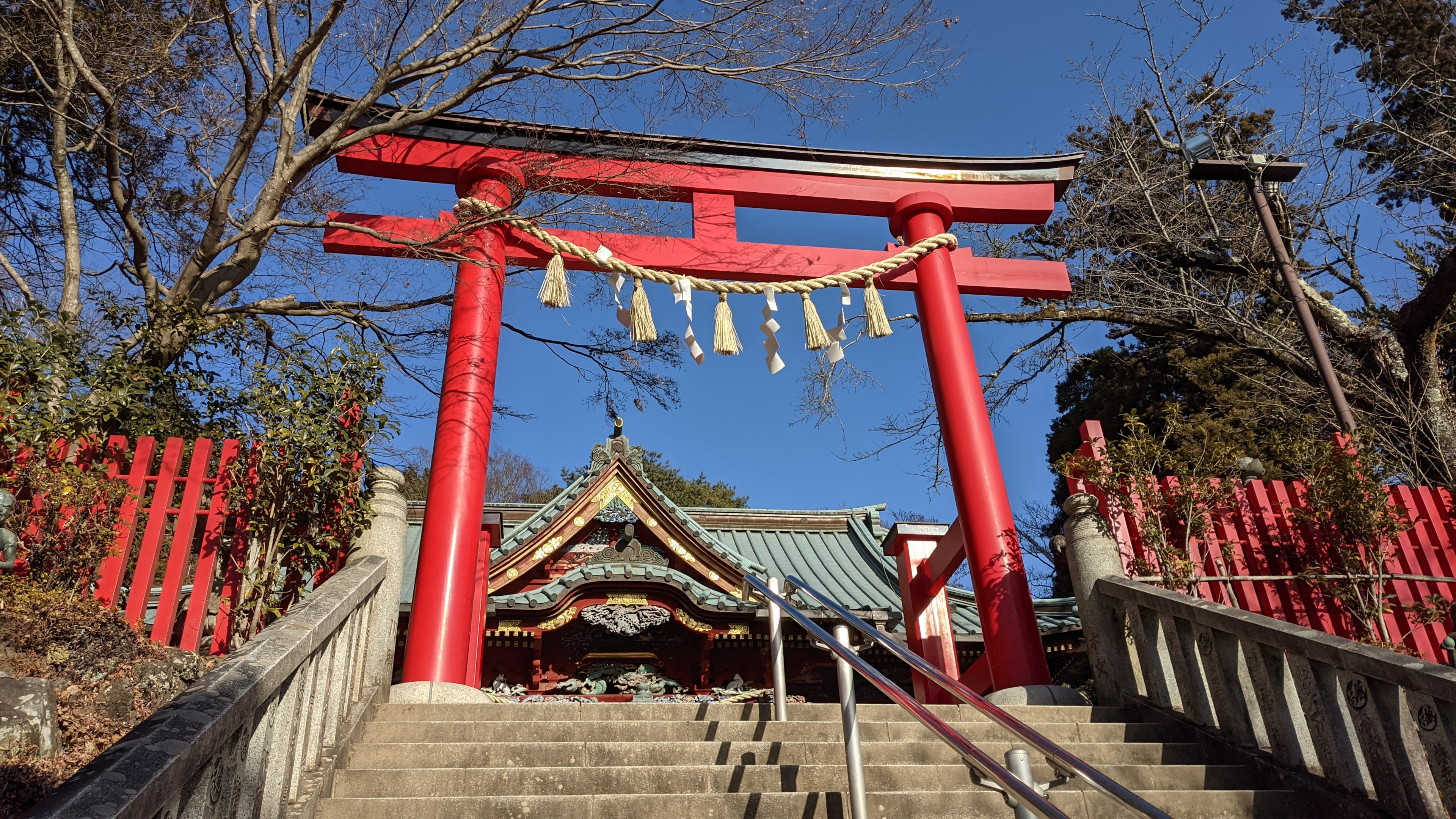
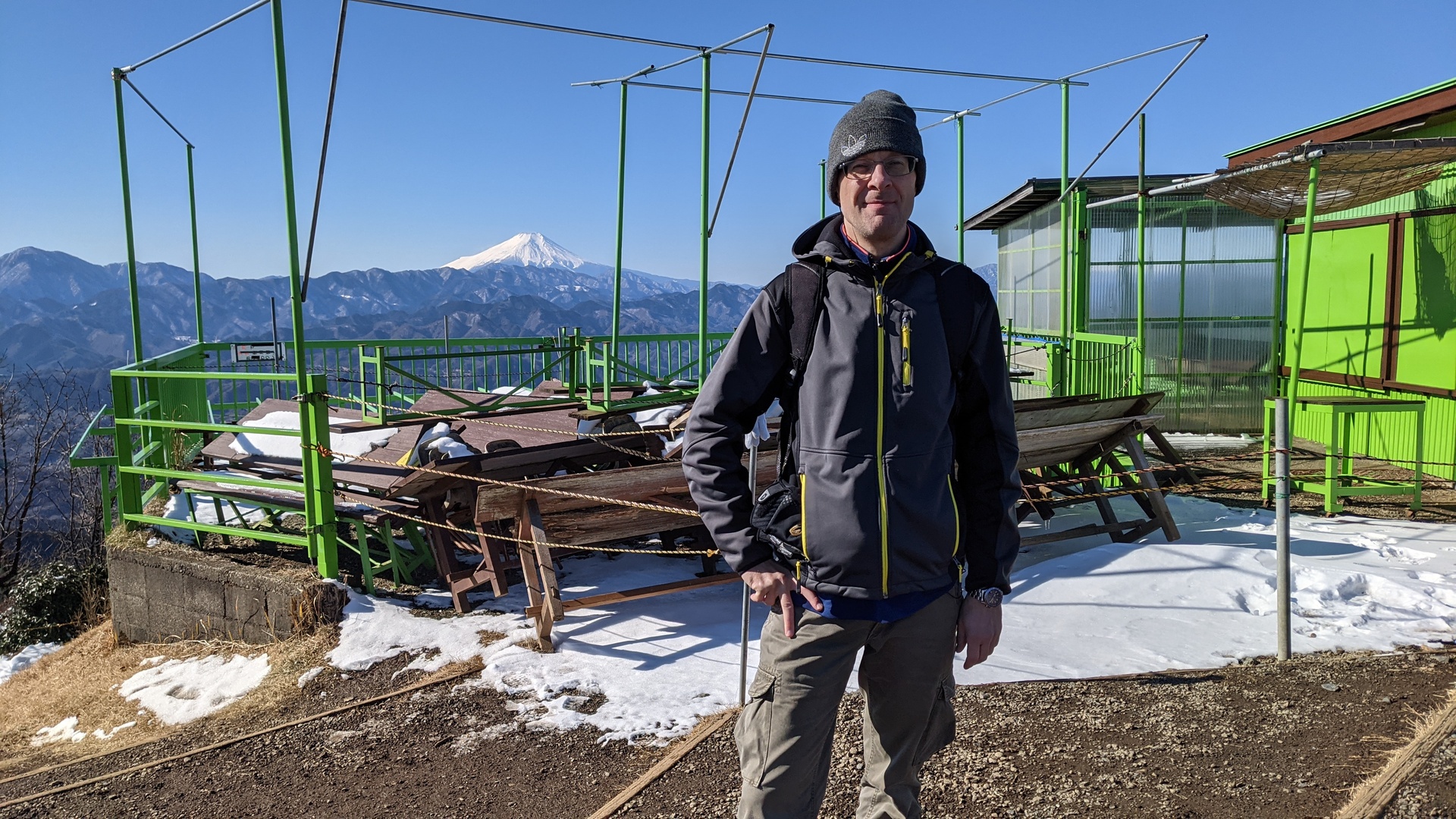
Greeting other hikers
On most days, a few others are also walking into our direction, or walk the same way from the opposite direction. People greet each other: while still early with Ohayougozaimas/おはようございます. Later with Konnichiha/こんにちは. Not greeting would feel awkward, especially if the other party is greeting first - you have to return this. People are in general in a good mood, very different from commuters you meet on a weekday in the city. Here in the mountains, you also should be grateful for others around: if there is an accident, people will have to mutually provide help. I have also seen that: an insured person could not go down any more by herself, a team of ‘mountain helpers’ brought a hull (shaped a bit like a coffin) up the mountain, stored the person inside, and used ropes to get the person down. These activities cost quite some manpower and put even more people at risk - for that reason, in the Corona time, people were also asked to not go hiking.
Arriving at Mount Jinba
Around 10:15, we arrive at Mount Jinba. Speciality: a big white horse. Usually also other hikers are there, taking a break, some have brought cookers and prepare a meal. 2 restaurants offer cold and hot meals, drinks. Also more obscure things like Yuzuwine. Yuzu is a kind of lemon. Somewhere a Diesel power generater is running.
We leave the summit and walk towards 景信山/Kagenobusan, the next peak. This trail is used more heavily than the previous one. I think that trail is on a mountain ridge, but it’s not like one would look downwards into valleys on both sides all the time. After one hour we arrive at the Kagenobu peak, also here one or two shops are open. Tempura with vegetables, ramen, drinks, and souvenirs are offered. It’s usually as busy as the peak of Mnt. Jinba. Sometimes there are events, like preparation of Mochi (sweet rice cake), which involves hammering down rice over a longer time.
We leave towards the next peak, takes 60min until 小仏城山/Kobotokeshirosama. From here then 45min until 高尾山/ Mnt Takao. That one is well known: it’s the default mountain to go to from Tokyo. That means that our last part of the way until Takaosanguchi trainstation is quite busy. Also families with baby strollers, and bigger groups are around. We can choose between 6 different trails to get to the train station. The most famous one is also featuring one Shrine and one Temple. I usually stop at any of these, throw money in a box, bow. Sometimes monks are reading sutra. Souvenirs can be bought, and omamoli/talisman for protection. Some visitors hand over a small notebook to temple employees, to get a stamp from the temple, together with a personalized Buddhist phrase. Like a stamp rally, some people enjoy going to various temples and collect these stamps/signatures. On this last part, one can also use chair lifts or ropeway instead of walking.
As we arrive at the train station, we have further options:
- having a full meal in restaurants there
- going to one of the 2 or 3 museums. Most famously, the ’trick art museum’
- visiting the bath right next to the train station. Nothing required, they rent out towels.
The train to Chitose-Karasuyama station takes 45-60min, I fetch the bike and drive back home. The trip from Fujino-station to Takao-station is 19km, and can be done in 5 hours. Walking the route in the opposite direction is also nice: with the ropeway/chairlift on the first part, basically everybody can enjoy at least to go to Takaosan. If the condition allows it, one can then extend the trip to the next peak, or walk until Jinbasan. Just then when going to Fujino-station, trains back to Tokyo are more rarely running than from Takaoguchi-station.
Which kinds of folks are around?
You meet many people. Young and older people just walking by them self, or in small groups. Also whole families. Mountain runners are not only walking but running the whole way. Especially between on the last part, there are sometimes longer groups composed of many women/man couples who walk next to each other - these are often organized by businesses, and aimed at finding friends or a partner for life. After some minutes, people rotate, so everybody gets to speak with everybody.
I also have met Germans on these trails. Mostly I’m there alone, but sometimes with friends or colleagues. Some years ago, I walked for 90min with 2 Americans who worked at a nearby American base. America had just moved out of Afghanistan at that time, that also made an interesting topic to talk about.

Why I enjoy Hiking in Japan
First factor: contact with nature. The Japanese term 森林浴/Shinlinyoku describes the act of moving in the woods, enjoying nature, “diving into the woods”.
It’s also not getting boring for me: when talking with a friend or coworker, you get the chance for longer chats. When alone, I’m listening to podcasts with one ear. Moving for some hours is also good for health.
Views from the mountains are also nice.
Special experiences?
The more you go, the higher are also chances for unusual experiences. When going in the winter, I was one time slipping and falling down, damaging a limb, I felt that for some weeks. Professionals use in these situations “aisen”, metal frames with spikes which can be attached to the shoes.
Another day in late spring, on one part of the trail, many caterpillars were winding down from the trees above. They used thin threads like also spiders produce them. They were small enough to not immediately be seen. The caterpillars were spinning down over ~100 meter along the way, this was quite scary. The path was at that area made from wood, and walking around the event was not possible.
I also had periods of rain, and after days of rain much mud on the trails. Once snow was falling, this was very nice - especially as it was also falling when afterwards going into the bath, and soaking into the hot outside pools.
More:
Comments? -> Mastodon thread.
